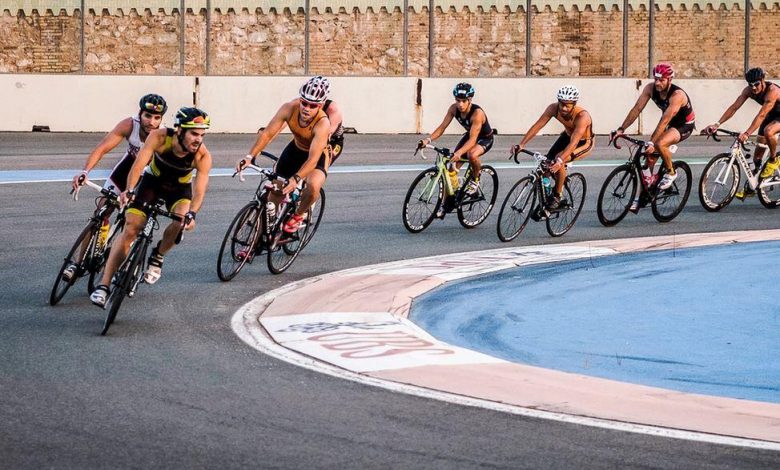How to prepare the cycling sector for a sprint and Olympic triathlon?
We explain the characteristics of each distance and tell you several training guidelines.

Do you want to participate in sprint or Olympic distance triathlons? We explain the characteristics of each distance and we tell you several guidelines for training.
Characteristics of distances How to know if I can participate?
Sprint Distance
At Lóleo Eventos, sprint distance you will have to do 20Km in the cycling sector, depending on your level this can be translated From 30 to 60 minutes.
To successfully face this segment, we recommend that you train until you get toGuantar at least an hour and a half on the bike at a pace that involves some fatigue. This can be achieved with two days of cycling training a week.
Olympic Distance
At Olympic triathlon the cyclist segment consists of 40Km, this is approximately between 1 hour and 1 hour and 45 minutes, a very wide range that will depend on your level and the average rhythm that you manage to maintain.
To face an Olympic distance triathlon, we recommend you follow a training that allows you to spend more than two hours on the bike at a rate of medium intensity with high intensity peaks. Performing between 2 and 3 cycling training sessions a week you can achieve these objectives.
Generally, in both distances it is allowed to roll a wheel (drafting), although you can find some Olympic distance tests in which it is not allowed.
Training guidelines
For both distances it is recommended that you include a weekly long-run session.
In the case of distance sprint will suppose between a hour and hour and media, while for distance Olympic must go from an hour and a half to two and a half hours. Remember that you always have to go progressively, both in the training time and in the difficulty of the proposed route.
In plain
Another of the weekly sessions devícala to make changes of pace, just as we do fartlek in the foot race we can do it on the bike.
If you go on the road, you can use relatively flat circuits to make the changes of rhythm, and if it is played using a roller, it also modifies the rhythm every "x" minutes between two or three different intensities.
On slopes
When you do training for routes with slopes you can take advantage of these to do them with greater intensity choosing to stay seated in the saddle or doing a sprint in each climb getting up to apply the maximum possible strength in your pedalada.
This type of sessions can last between 45 minutes and an hour and a half depending on whether you are doing it on a roller or on the road.
In a group
Some of the training sessions try to go out in a group, of course at a level similar to yours.
The distance and time you use in this training can be in the background while Priorices learn the technique of shooting in a group. Practice go to wheel, Do relays, keep the steady pace with the group, do not stay behind in the turns or in the starts.
These situations will occur in competition and may surprise you if you are not used to practicing them.
Train race after cycling
Also, we recommend you do perform some of the race training after cycling periodically, for example every 2 weeks.
If we do it very consistently, the race training will always be harmed by the fatigue of the bike, but do it with some frequency your legs and your body experience the change of position and muscle demand we need for the last segment and thus it will help keep the rhythms in competition.
Remember that we give you information about both speed and time used in the segments. Depending on your level and previous experience, you will be able to get closer to the lower or upper limit in terms of the time spent, and exceed the average guide speed. So it is always better to find a qualified person to guide you in your training to achieve the objectives.
Laura García Cervantes

There are no previous results.




























